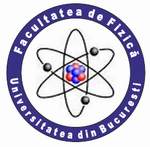| |
 |
UNIVERSITY OF BUCHAREST
FACULTY OF PHYSICS Guest
2025-10-05 22:31 |
 |
|
|
|
Conference: Bucharest University Faculty of Physics 2025 Meeting
Section: Nuclear and Elementary Particles Physics
Title:
Assessment of Radon and Gamma Radiation Exposure in a School Environment: Trends, Influencing Factors, and the Use of Complementary Methods
Authors:
Angelica GHERGHELAȘ(1,3),Ana Maria APOSTU-BLEBEA(2), Felicia MIHAI(2),
Ileana RĂDULESCU(2), Alexandru JIPA(1)
*
Affiliation:
(1)University of Bucharest, Faculty of Physics, Bucharest-Magurele, ROMANIA
(2)Horia Hulubei National Institute for Research and Development in Physics and Nuclear Engineering, Bucharest-Magurele, ROMANIA
(3)Ion Creangă National College, Bucharest, ROMANIA
E-mail
angelicagherghelas@gmail.com
Keywords:
Radon exposure; Passive and active measurement methods; Effective dose estimation
Abstract:
The study analyzes radon and gamma radiation exposure inside the premises of "Ion Creangă" National College, using complementary monitoring methods: passive solid-state nuclear track detectors (CR-39), continuous active monitoring with the AlphaGuard system, and thermoluminescent detectors (TLD) for assessing external gamma dose. The objectives were twofold: to evaluate the consistency between radon measurements obtained through passive and active methods performed under different environmental and occupancy conditions, and to estimate the cumulative annual effective dose (internal from radon inhalation and external from terrestrial gamma radiation), adjusted to the actual usage time of each monitored space.
The analysis revealed a strong correlation between passive concentrations and the medians of active time series (Spearman ρ > 0.88, p < 0.001), indicating a coherent spatial distribution pattern of radon levels across different rooms. However, significant discrepancies were identified in several rooms, associated with variations in occupancy, ventilation habits, or structural factors such as floor level and room purpose.
Estimated internal doses for one school year ranged from 0.09 to 0.78 mSv, while external gamma doses, measured using thermoluminescent detectors, ranged between 0.02 and 0.32 mSv. The magnitude of exposure was clearly influenced by the room location (e.g., basement, ground floor vs. upper floors) and its functional role (e.g., classroom, library, book storage room). Simulations carried out in three representative rooms based on active measurements showed that daily ventilation lasting from 1 to 4 hours can reduce radon concentrations by 46% to 70% on average, depending on duration, clearly demonstrating the increasing effectiveness of regular natural ventilation in reducing indoor exposure.
The study supports the complementary use of passive and active methods for reliable exposure assessment and recommends continuous or periodic monitoring as a preventive tool to detect unexpected radon accumulations, particularly in public spaces such as schools.
References:
1. Burghele, B. D., and C. Cosma. "Thoron and radon measurements in Romanian schools." Radiation protection dosimetry 152.1-3 (2012): 38-41.
2. Perko Vukotic, Ranko Zekic, Nikola Svrkota, Tomislav Andjelic, Aleksandar Dlabac, Radivoje Mrdak, Ranko Svrkota, Radon in schools of Montenegro, Radiation Protection Dosimetry, Volume 201, Issue 3, March 2025, Pages 211–222, https://doi.org/10.1093/rpd/ncaf009
3. UNSCEAR. (2000). Sources and Effects of Ionizing Radiation: UNSCEAR 2000 Report to the General Assembly, with Scientific Annexes, Volume I: Sources. United Nations, New York.
4. ICRP. (2017). Occupational Intakes of Radionuclides: Part 3. ICRP Publication 137. Annals of the ICRP, 46(3/4). International Commission on Radiological Protection.
5. Comisia Națională pentru Controlul Activităților Nucleare (CNCAN). (2023). Ordinul nr. 153 din 27 iulie 2023 privind aprobarea Metodologiei pentru determinarea concentrației de radon în aerul din interiorul clădirilor și de la locurile de muncă. Monitorul Oficial al României, Partea I, nr. 729 din 8 august 2023.
|
|
|
|

